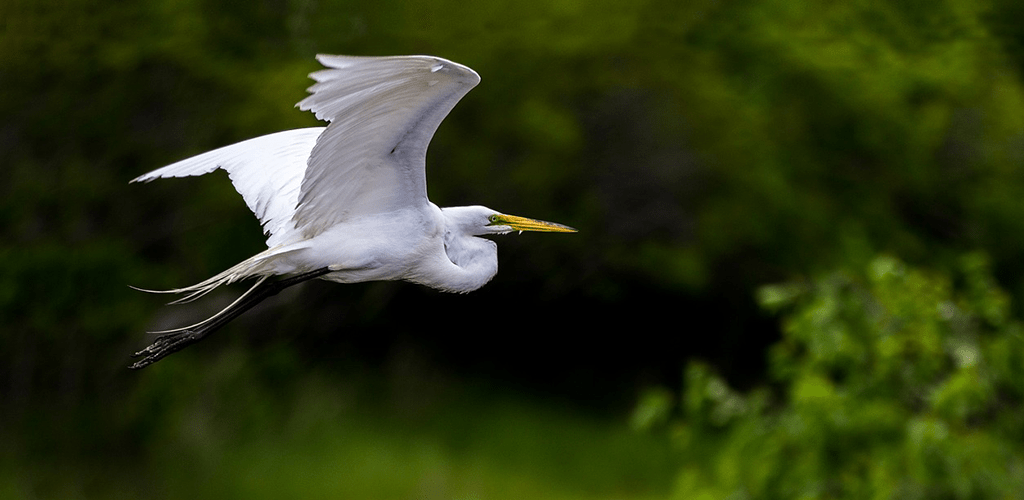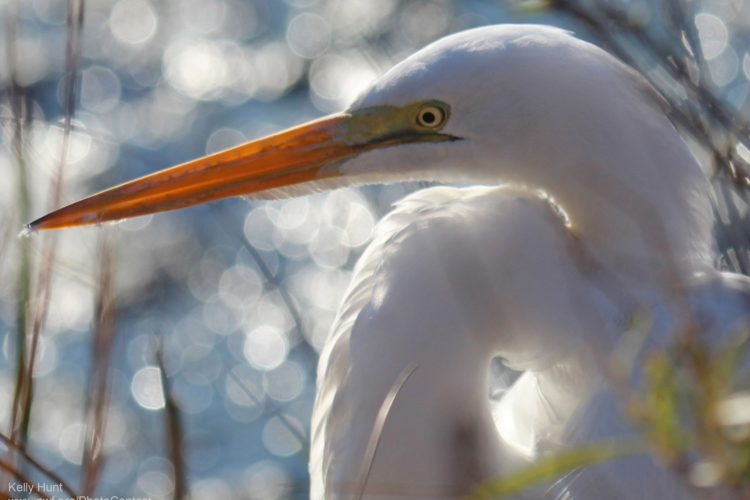We have much more to do and your continued support is needed now more than ever.
Help Protect Mississippi River Wetlands for Great Egrets

The great egret is one of the more than 193 species of birds that depend on these vital floodplain wetlands for food and habitat to survive. A member of the heron family, this large wading bird has a 55 inch wingspread, giving it wings longer and wider than most other white herons!
Hunting only during the day, the great egret forages alone or in mixed flocks by standing immobile as it looks for fish, snakes, frogs and insects. It then jabs quickly at its prey with its long yellow bill. In mixed-species colonies, the great egret blazes the trail and are the first to arrive, encouraging other species to nest nearby.

Their beautiful white plumage has caught the eye of a variety of predators, particularly 19th century fashionistas that popularized using the plumage in their hats. The large white plumes, plus the smaller neon green plumes from mating season, were coveted by socialites, leading to overhunting and a dangerous decline in the species. Thankfully, the fashion faded as did this risk to the great egret — their brush with extinction inspired conservation movements and some of the first laws to protect birds.
 But the great egret is not home free. Like so many other species of wildlife, the great egret continues to lose vital habitat at an alarming rate. The great egret could lose all its habitat in the New Madrid Floodway if the Corps of Engineers is allowed to proceed with its environmentally devastating St. Johns New Madrid Project.
But the great egret is not home free. Like so many other species of wildlife, the great egret continues to lose vital habitat at an alarming rate. The great egret could lose all its habitat in the New Madrid Floodway if the Corps of Engineers is allowed to proceed with its environmentally devastating St. Johns New Madrid Project.
This project includes an enormous new levee that will cut off the last connection between the Mississippi River and its natural backwater habitat in the state of Missouri, decimating the vital wetlands in the New Madrid Floodway and eliminating the essential river-floodplain connection. The proposed project would destroy this unique area and threaten the great egret. The Corps of Engineers is poised to recommend construction of this $165 million project even though its own leadership has called the project an “economic dud” with “huge environmental consequences”.
Destroying this rare river-floodplain connection means the project will drain an area of wetlands larger than the District of Columbia, eliminate the most important backwater fisheries habitat in the Middle Mississippi River, and threaten the safety of river communities. Other agencies have also highlighted the unacceptable environmental consequences from this project.
The U.S. Fish and Wildlife Service has repeatedly told the Corps of Engineers that the project “would cause substantial, irretrievable losses of nationally significant fish and wildlife resources, and greatly diminish rare and unique habitats found in southeast Missouri”. The EPA has declared the project would cause “the greatest loss of wetlands functions in EPA Region 7’s history” and “significant impacts to the area’s aquatic ecosystems”. The Missouri Department of Conservation has flatly stated that the levee should not be built.
There’s no denying it: great egrets will lose if this huge expanse of Mississippi River wetlands is destroyed.
Make A Difference
You can help the great egret today! The U.S. Environmental Protection Agency has the power to veto the project and protect this rare and unique habitat. Join us and tell the EPA to #StopTheLevee
Take Action




















